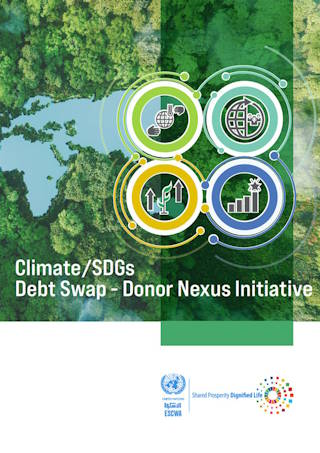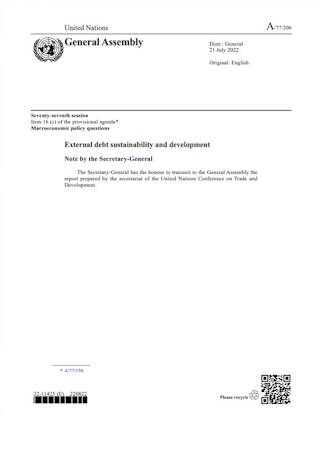“A World of Debt” aims to provide you with an accessible and comprehensive platform to understand the critical issues of public debt in developing countries. The resources section is here to provide you with additional materials and broaden your understanding of the debt issue.
- Take advantage of a wealth of resources and delve deeper into the subject with our compilation of recent materials produced across the United Nations. Gain valuable insights and additional information on various aspects of debt.
- Understand our methodology and learn about the indicators and sources we use in our narratives and dashboard. Get a clear understanding of how we analyze and present data, enabling you to interpret and utilize information effectively.
- Explore Country Classifications through our country overview table which provides comprehensive information on the composition of different groups used in our analysis. Gain insights into the diverse composition of the developing world.
- 1. Public Debt
-
1.1 Public debt as a share of GDP
This indicator measures a country's general government gross debt stock relative to its economy. A high debt-to-GDP ratio suggests that a country has a higher level of debt relative to its economic output, which may indicate potential debt vulnerabilities. A low debt-to-GDP ratio is generally considered to be a positive indicator of a country's situation, as it suggests that the country has greater fiscal space and more flexibility to manage its finances and absorb shocks.
General government consists of central, state and local governments and the social security funds controlled by these units. Gross debt stock includes domestic and external liabilities.
Sources
IMF World Economic Outlook (April 2023).1.2 Public debt in USD billions
This indicator measures a country's general government gross debt in nominal terms in billions of US dollars. The figure reflects several country-specific factors, including size of the economy, institutional capacity and conditions of access to financing.
General government consists of central, state and local governments and the social security funds controlled by these units. Gross debt stock includes domestic and external liabilities. Gross debt stock includes domestic and external liabilities.
Country group aggregates. Data for the period 2010-2022.
Sources
IMF World Economic Outlook (April 2023).1.3 Public debt in USD per capita
This indicator measures a country's general government gross debt in nominal US dollars relative to its population. The figure reflects several country-specific factors, including size of the economy, population size, institutional capacity and conditions of access to financing.
General government consists of central, state and local governments and the social security funds controlled by these units. Gross debt stock includes domestic and external liabilities. Gross debt stock includes domestic and external liabilities.
Country group aggregates. Data for the period 2010-2022.
Sources
IMF World Economic Outlook (April 2023). - 2. External public debt
-
2.1 External public debt as a share of GDP
This indicator measures a country's external public and publicly guaranteed (PPG) debt relative to its economy. A large share of external PPG debt may indicate that a country is vulnerable to changes in foreign investor sentiment and fluctuations in exchange rates. A low share may indicate that a country is less dependent on foreign borrowing and hence more resilient to external shocks.
External PPG debt comprises long-term external obligations of public debtors, including the national government, public corporations, state-owned enterprises, other public bodies, and external obligations of private debtors that are guaranteed for repayment by a public entity.
Country group aggregates. Data for the period 2010-2022.
Sources
IMF World Economic Outlook (April 2023) and World Bank International Debt Report 2022.2.2 External public debt in USD billions
This indicator measures a country's external public and publicly guaranteed (PPG) debt in nominal terms in billions of US dollars. The figure reflects several factors, including size of an economy, institutional capacity and conditions of access to financing. A larger figure may indicate that a country is vulnerable to changes in foreign investor sentiment and fluctuations in exchange rates. A lower figure may indicate that a country is less dependent on foreign borrowing and hence more resilient to external shocks.
External PPG debt comprises long-term external obligations of public debtors, including the national government, public corporations, state-owned enterprises, other public bodies, and external obligations of private debtors that are guaranteed for repayment by a public entity.
Country group aggregates. Data for the period 2010-2022.
Sources
IMF World Economic Outlook (April 2023).2.3 External public debt in USD per capita
This indicator measures a country's external public and publicly guaranteed (PPG) debt in nominal US dollars relative to its population. The figure reflects several factors, including size of an economy, population, institutional capacity, and conditions of access to financing.
External PPG debt comprises long-term external obligations of public debtors, including the national government, public corporations, state-owned enterprises, other public bodies, and external obligations of private debtors that are guaranteed for repayment by a public entity.
Country group aggregates. Data for the period 2010-2022.
Sources
IMF World Economic Outlook (April 2023) and World Bank International Debt Report 2022. - 3. External public debt by creditor
-
3.1 Multilateral creditors as a share of external PPG debt
This indicator shows the proportion of a country's external public and publicly guaranteed (PPG) that is owed to different types of creditors. The creditor types are classified by sector, including multilateral, bilateral and private creditors. The indicator provides insights into a country's level of indebtedness to different types of creditors and the associated risks. The composition of external creditors has a bearing on the cost and structure of financing as well as on the nature and complexity of negotiations in case of debt rescheduling or write-off.
External PPG debt comprises long-term external obligations of public debtors, including the national government, public corporations, state-owned enterprises, other public bodies, and external obligations of private debtors that are guaranteed for repayment by a public entity.
Country group aggregates. Data for the period 2010-2022.
Sources
World Bank International Debt Report 2022.3.2 Bilateral creditors as a share of external PPG debt
This indicator shows the proportion of a country's external public and publicly guaranteed (PPG) that is owed to different types of creditors. The creditor types are classified by sector, including multilateral, bilateral and private creditors. The indicator provides insights into a country's level of indebtedness to different types of creditors and the associated risks. The composition of external creditors has a bearing on the cost and structure of financing as well as on the nature and complexity of negotiations in case of debt rescheduling or write-off.
External PPG debt comprises long-term external obligations of public debtors, including the national government, public corporations, state-owned enterprises, other public bodies, and external obligations of private debtors that are guaranteed for repayment by a public entity.
Country group aggregates. Data for the period 2010-2022.
Sources
World Bank International Debt Report 2022.3.3 Private creditors as a share of external PPG debt
This indicator shows the proportion of a country's external public and publicly guaranteed (PPG) that is owed to different types of creditors. The creditor types are classified by sector, including multilateral, bilateral and private creditors. The indicator provides insights into a country's level of indebtedness to different types of creditors and the associated risks. The composition of external creditors has a bearing on the cost and structure of financing as well as on the nature and complexity of negotiations in case of debt rescheduling or write-off.
External PPG debt comprises long-term external obligations of public debtors, including the national government, public corporations, state-owned enterprises, other public bodies, and external obligations of private debtors that are guaranteed for repayment by a public entity.
Country group aggregates. Data for the period 2010-2021.
Sources
World Bank International Debt Report 2022. - 4. Public debt interest payments
-
4.1 Public interest payments as a share of GDP
This indicator measures the net interest payments made by a country’s general government on its outstanding debt relative to its economy. The indicator reflects the extent to which the government's debt service obligations are weighing on the economy and overall fiscal health. A high ratio of government interest payments to GDP suggests that servicing government debt is costly relative to the size of the economy, which may limit the resources available for other public spending priorities. Conversely, a low ratio of interest payments to GDP indicates that the government's debt burden is more manageable.
Net interest payments of the general government refer to the total amount of domestic and external interest expenses incurred from loans and other forms of borrowing, minus any interest income received.
Country group aggregates. Data for the period 2010-2022.
Sources
World Bank International Debt Report 2022.4.2 Public interest payments as a share of revenue.
This indicator measures the amount of net interest payments made by a country’s general government on its outstanding debt relative to its total revenues. The indicator reflects the extent to which the government's debt service obligations are weighing on a country's overall fiscal health. A high ratio of government interest payments to government revenues suggests that a significant portion of the government's revenue is being used to service debt, which may limit the resources available for other public spending priorities.
Net interest payments of the general government refer to the total amount of domestic and external interest expenses incurred from loans and other forms of borrowing, minus any interest income received.
Country group aggregates. Data for the period 2010-2022.
Sources
IMF World Economic Outlook (April 2023).4.3 Public interest payments in USD per capita.
This indicator measures the amount of net interest payments made by a country’s general government on its outstanding debt in US dollars relative to its population. The figure reflects several factors, including size of an economy, population, institutional capacity, and conditions of access to financing.
Net interest payments of the general government refer to the total amount of domestic and external interest expenses incurred from loans and other forms of borrowing, minus any interest income received.
Country group aggregates. Data for the period 2010-2022.
Sources
IMF World Economic Outlook (April 2023). - 5. Development spending
-
5.1 Education expenditure as a share of GDP
This indicator measures a country’s general government spending on education relative to the size of its economy. A high share indicates the allocation of a substantial amount of resources towards education. A low share indicates potential underinvestment in education in the country, which increases the development challenges it faces.
Country group aggregates. Estimations based on three-year averages for the periods of 2010-2012, 2014-2016 and 2019-2021.
Sources
World Bank World Development Indicators.5.2 Health expenditure as a share of GDP
This indicator measures a country's general government spending on health relative to the size of its economy. A high share indicates the allocation of a substantial amount of resources towards health. A low share indicates potential underinvestment in health in the country, which increases the development challenges it faces.
Country group aggregates. Estimates based on three-year averages for the periods of 2010-2012, 2014-2016 and 2019-2021.
Sources
World Bank World Development Indicators.5.3 Public investment expenditure as a share of GDP
This indicator measures a country's general government spending on investment relative to the size of the economy. A high share indicates the allocation of a substantial amount of resources towards investment. A low share indicates potential underinvestment in public infrastructure in the country, which increases the development challenges it faces.
Country group aggregates. Estimates based on three-year averages for the periods of 2010-2012, 2014-2016 and 2019-2021.
Sources
IMF Investment and Capital Stock Dataset. - 6. Debt burden relative to development spending
-
6.1 Ratio of interest payments to education expenditure
This indicator measures the relative proportion of a country’s general government's resources that are dedicated to net interest payments to those allocated to public education. A value greater than 1 shows that a country spends more on interest payments than on education. The indicator provides insights into the potential impact of debt servicing on a government's ability to fund essential public services.
Country group aggregates. Estimates based on three-year averages for the periods of 2010-2012, 2014-2016 and 2019-2021.
Sources
World Bank World Development Indicators and IMF World Economic Outlook (April 2023).6.2 Ratio of interest payments to health expenditure
This indicator measures the relative proportion of a country’s general government's resources that are dedicated to net interest payments to those allocated to public health. A value greater than 1 shows that a country spends more on interest payments than on health. The indicator provides insights into the potential impact of debt servicing on a government's ability to fund essential public services.
Country group aggregates. Estimates based on three-year averages for the periods of 2010-2012, 2014-2016 and 2019-2021.
Sources
World Bank World Development Indicators and IMF World Economic Outlook (April 2023).6.3 Ratio of interest payments to public investment
This indicator measures the relative proportion of a country’s general government's resources that are dedicated to net interest payments to those allocated to public investment. A value greater than 1 shows that a country spends more on interest payments than on investments. The indicator provides insights into the potential impact of debt servicing on a government's ability to fund essential public investments.
Country group aggregates. Estimates based on three-year averages for the periods of 2010-2012, 2014-2016 and 2019-2021.
Sources
World Bank World Development Indicators and IMF World Economic Outlook (April 2023).

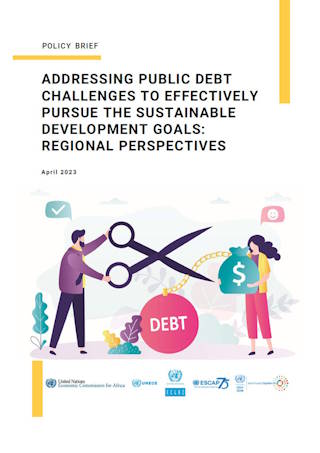
regional perspectives, Policy Brief jointly prepared by five Regional Commissions of the United Nations
(10 April 2023)

building back better from the coronavirus disease (covid-19) while advancing the full implementation of the 2030 agenda for sustainable development
(November 2022)
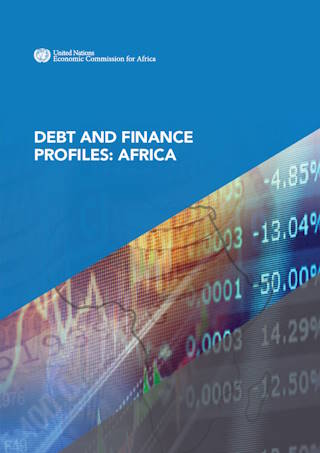
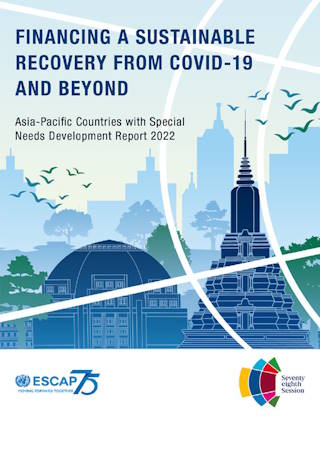
Asia-Pacific Countries with Special Needs Development report 2022
(25 May 2022)
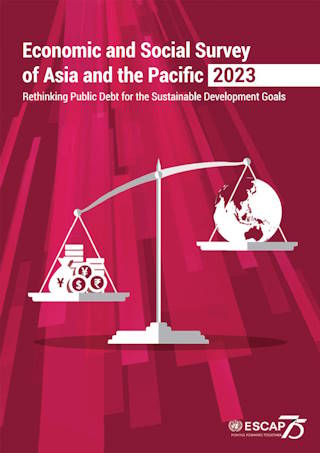
rethinking public debt for the sustainable development goals
(5 April 2023)
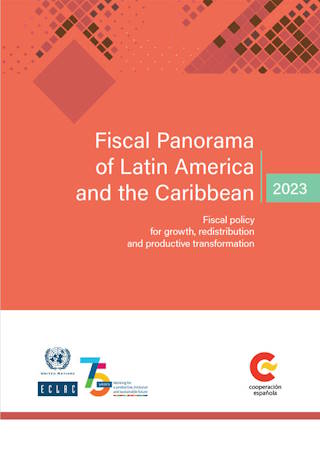
fiscal policy for growth, redistribution and productive transformation
(May 2023)

